Best plants for pollinators: 25 ways to help wildlife in your plot
The best plants for pollinators will attract butterflies, bees, moths and birds to your garden and provide them with the food they need for their survival
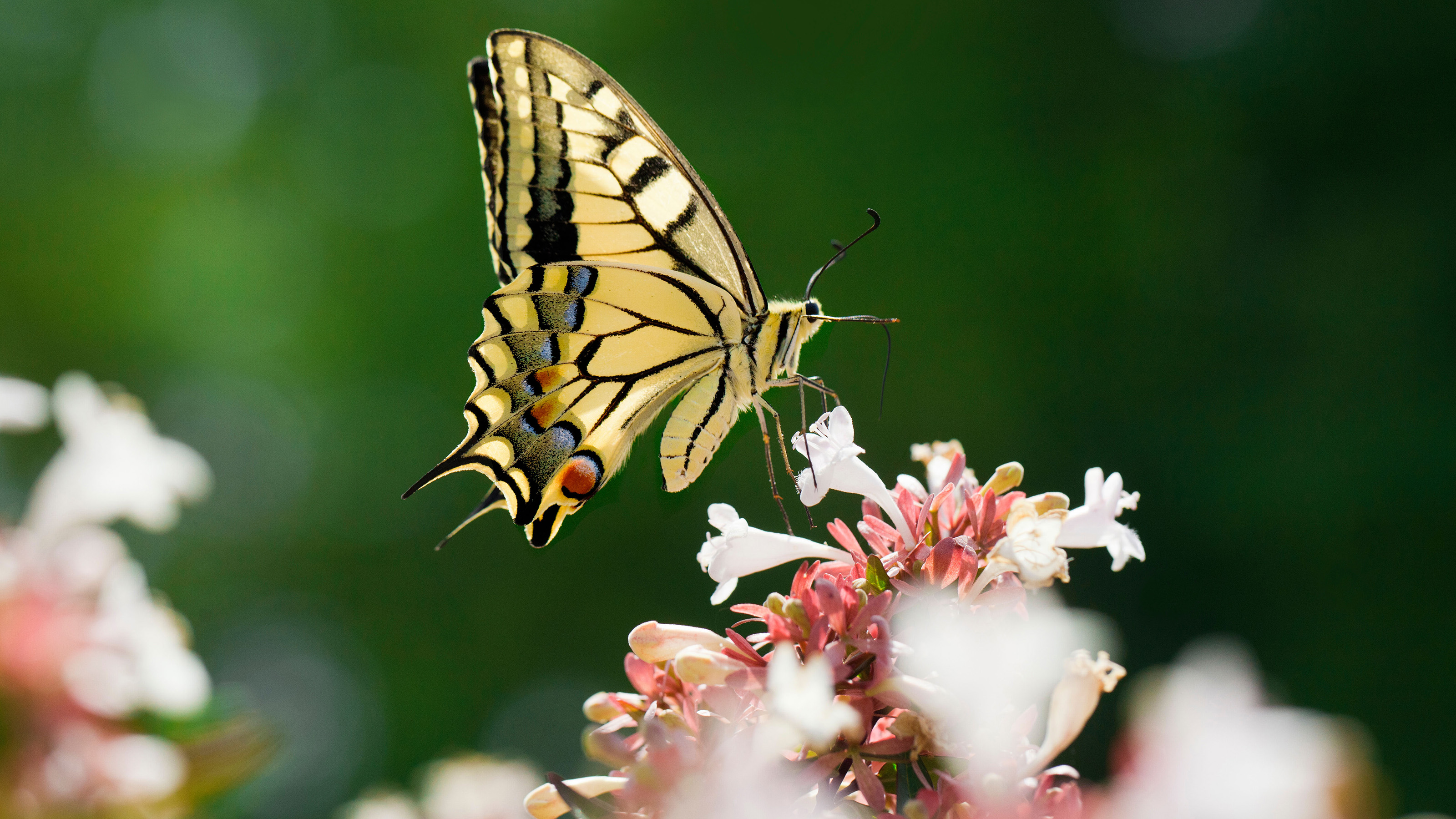

By choosing plants for pollinators you can expect to see wildlife come flocking to your plot. Picture a summer’s day, with clouds of colorful butterflies fluttering through the garden, while the borders hum with bees and hoverflies. But the magic that pollinators bring to our gardens goes beyond a bucolic romance.
Pollinators desperately need our help to survive – they need nectar and pollen, water and shelter – not just in summer, but all year round. We can all do our bit by growing familiar plants to help them, even if we’ve only got a window box.
Whether you've gone the whole hog and tried rewilding your garden, or simply sown a few wildflower seeds, this appeal for designing for wildlife goes beyond any ordinary planting trend.
It has even begun to dictate the way garden designers plan their designs. Garden designer Jilayne Rickards thinks that color schemes could be on their way out altogether and plants for pollinators will become the key consideration. ‘I think people would rather see wildlife than color schemes right now,' she says.
Plant up a feast of plants for pollinators
Pollinators are essential to plant and food production. Without them to spread pollen around, plants couldn't reproduce. Growing these plants for pollinators in our own gardens will not only help pollinators but they will also look beautiful in our plots.
1. Ivy (Hedera helix)

The silver-leaved Ivy 'Gloire de Marengo' will give stunning foliage all year round
With its shiny evergreen leaves, the common English ivy is a haven for pollinators. Its dense habit provides shelter for hibernating bumblebees, butterflies, hoverflies and moths, making it an excellent choice for a wildlife garden.
Grow it as a self-clinging climber for your garden fence or wall, or as ground cover. In the depths of winter its striking spherical flowers give structural interest, and are followed by black berries which birds will love.
The evergreen varieties are shade-loving plants. There are variegated types too, which prefer a sunnier spot. Opt for ‘Goldheart’ for a splash of yellow in the foliage, or ‘Gloire de Marengo’ for silver.
Plant ivies in soil that will not dry out, and keep them moist until they’re well established. If trained up a wall it will grow from 6-12ft (1.8-3.6m).
2. Holly (Ilex)
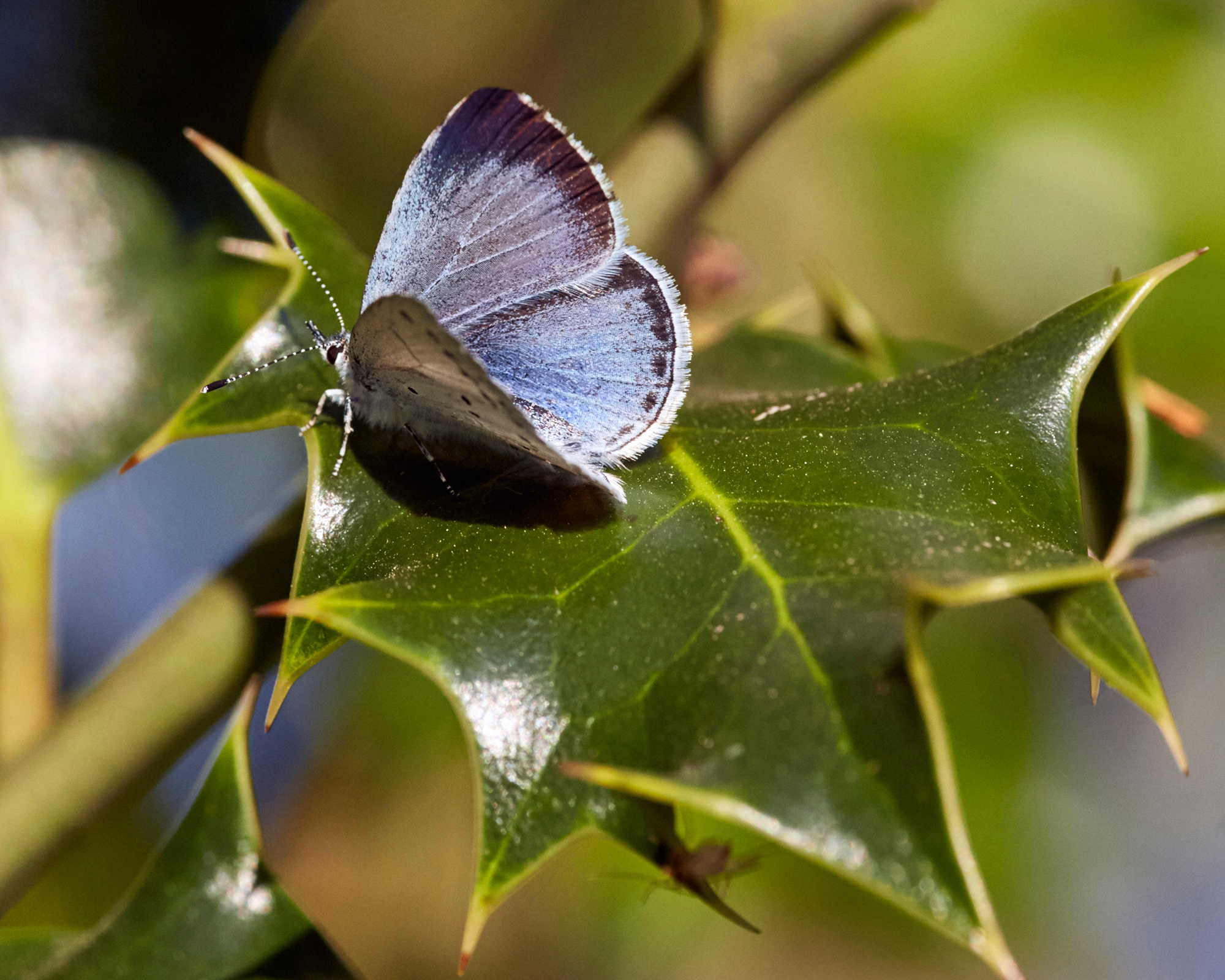
The 'Holly Blue' butterfly hibernates in the foliage of the holly bush
This handsome evergreen, with its spiky green leaves is usually renowned for being one of the best winter garden plants. But in summer tiny white flowers emerge, and scarlet berries follow this in fall.
What you might not realise, however, is that it's one of the best plants for pollinators you can grow in the garden. The ‘Holly Blue’ butterfly hibernates in its foliage, and its dense growth provides winter cover for bees.
Hollies are either male or female, so plant a female or self-fertile form if you want berries, and who wouldn’t? The variety ‘Pyramidalis’ is a female plant, which bears lots of berries, and suits a small garden, growing to a height of 20ft (6m).
A sunny or part-shady site is fine, but holly prefers moist soil. It makes a low maintenance hedge plant and is far more beneficial to wildlife than other types of garden boundaries. Prune holly in late spring, but don’t move it around – it hates being transplanted.
3. Crocus

Crocus tommasianus provide vital nectar to bumble bees in early spring
Everyone loves these tiny jewel-like flowers that appear early in the year, signalling that spring is on the way. If you're wondering how to plant crocus bulbs, they look amazing planted in large colorful swathes in lawns. Their cup-shaped blooms come in a range of colors, from pastel to vibrant brights.
Try the white ‘Joan of Arc’ with orange stigmas which is one the best bee friendly plants, to striking purple shades such as tommasianus, great for naturalizing (spreading) in grass or gravel.
Crocus provide welcome sweet nectar, giving energy to bumblebees emerging from hibernation on early spring days. And what's more, they’re easy to grow: simply plant corms in September in well-drained soil, in the ground or in a container. Ensure they're situated in a sunny spot.
Protect the corms from foraging squirrels over winter. All being well they will grow to a height of 3-5in (7.5-13cm).
4. Sarcococca (Sweet box)

Sarcococca confusa will give off a beautiful scent in winter
You’ll smell sarcococca before you see it, so consider this option for a sensory garden. This unassuming-looking evergreen small-leaved shrub is welcome in the garden at a drab time of year, making it one of the best winter flowering shrubs. It pumps out a stop-you-in-your-tracks perfume that entices bumblebees.
One of the best varieties is ‘Confusa’, with its glossy dark green leaves, tiny white flowers and black fruits. For red fruits, choose the variety ruscifolia, and for a taller variety, opt for hookeriana var.digyna ‘Purple Stem’ with pink-tinged flowers growing to a height of 5ft.
Sarcococca is a shade-tolerant, low maintenance shrub, and it looks good even when it's not in flower. Grow it in the ground or in large containers near the house. It makes an attractive low hedge around taller shrubs.
5. Winter-flowering clematis

Clematis urophylla ‘Winter Beauty’ is an evergreen variety
The winter-flowering clematis are less well-known than the colorful, showy summer varieties but in early spring they’re an invaluable source of nectar for solitary bees visiting their nodding flowers.
Clematis urophylla ‘Winter Beauty’ is an evergreen clematis with small, pale, bell-shaped blooms which reaches heights from 10-15ft (3-5m). Clematis cirrhosa var.purpurascens ‘Freckles’ has cream flowers with a heavy spattering of red freckles inside and grows to 6-10ft (2-3m).
It’s also an evergreen and flowers from late autumn through to early spring. You can grow winter clematis in sun or shade, but it prefers to be planted deeply, in rich soil, with the roots shaded.
Don't forget, you'll also need to learn how to prune clematis depending on what type of plant you have. Place stones over the base of the plant, and cut right back after flowering in spring or early summer.
6. Pulmonaria (lungwort)

Pulmonaria ‘Blue Ensign’ will brighten up a shaded spot
The funnel-shaped pink, blue or white flowers of pulmonaria (lungwort) are perfect for attracting long-tongued bees seeking food in early spring. Lungwort, blooms in February or March, and is an easy perennial, with evergreen or semi-evergreen foliage often dotted with white spots.
It’s ideal for shady places as it's one of the best woodland plants for gardens. ‘Blue Ensign’, growing to 14in (35cm), has plain dark green leaves. For pure white flowers, opt for ‘Sissinghurst White’, with pale spotted leaves, which grows to 12in (30cm).
Lungworts self-seed around, but not too much. They’re easy to relocate when they do – just dig them up and replant where you want them. After flowering, the plants sometimes get mildew – just cut back them back to freshen up the foliage.
7. Hawthorn

The hawthorn will provide food for a range of wildlife
Crataegus monogyna, the common hawthorn, is one of the top plants for pollinators as it provides a year-round Smörgåsbord of tasty snacks for bees, birds, butterflies moths and other pollinators.
Its dense spiny growth provides shelter and habitat, its froth of small white flowers provides nectar and pollen. It is one of the best trees with berries as well as having seeds for birds, and is a caterpillar food plant too!
Crataegus, also known as ‘may’, can be a tree or shrub with glossy, dark green leaves. Some varieties like C. persimilis ‘Prunifolia’ grows to 25ft (8m) and has superb fall color.
Avoid the double-flowered types which, through pretty, are less accessible to bees. Plant hawthorn in full sun if possible, but avoid wet soil types. It’s excellent grown as an informal hedge and doesn’t mind polluted areas.
8. Salvia (sage)
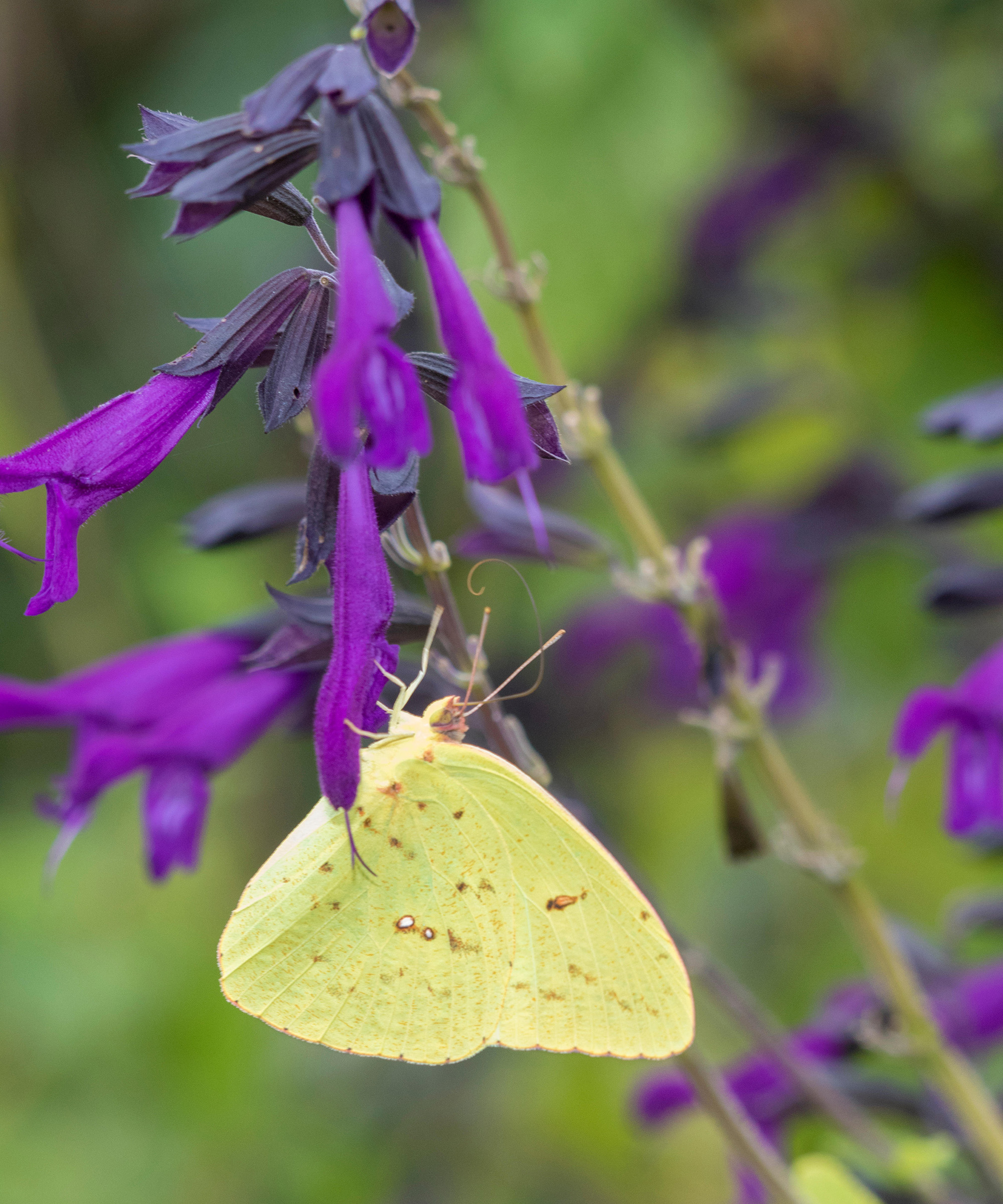
Salvia 'Amistad' will be loved by butterflies and bees
Learn how to grow salvias and you'll be rewarded with an amazing garden plant, which provides summer-long feasts for hungry pollinators due to their long-lipped tubular flowers crowded by long-tongued bees.
If you're a fan of herbs, grow the variety purpurascens, the purple-leaved sage. Or for an ornamental type, opt for ‘Amistad’ if you’ve space for a larger plant. Its showy purple flowers are mobbed by bees from May to October.
For a sultry deep red, try ‘Royal Bumble’, which is shorter at 24in (60cm). There are tons of other salvia varieties in every possible color. Salvias are also brilliant in containers and it's very easy to take cuttings from plants. Plant in sun or part shade and avoid wet soil.
9. Lavender

Lavender is a favorite of the honey bee
With its aromatic foliage and headily-scented flowers, lavender is one of our favorite plants for pollinators. You’ll find plants literally buzzing with bees in summer when it’s in full flower. It’s attractive to queen bumblebees, leafcutter bees and mason bees.
Most lavenders are shades of purple – top varieties are ‘Hidcote’, a deep purple, which reaches 2ft (60cm) and ‘Munstead’, a blue-purple, which grows to 18in (45cm). There are also pale pink varieties, like ‘Loddon Pink’ which grows to 18in (45cm).
The bunny-eared French lavenders, like stoechas pedunculata, are also attractive to pollinators but less likely to survive a British winter.
For the best chance of success with how to grow lavender, plant it in full sun and poor soil. Don’t feed it, and trim back plants in September. You can also take lavender cuttings to get even more plants for free.
10. Achillea (yarrow)

Achillea 'Red Velvet' is a vibrant variety of yarrow
The flattened horizontal blooms of achillea make the perfect landing pads for hungry pollinators to drink their fill. The flowers are like small plates, made up of dozens of tiny individual blooms overflowing with nectar, and they attract short-tongued solitary bees, plasterer bees and yellow-faced bees.
They flower all through summer, with attractive ferny foliage. Achilleas come in vibrant shades like ‘Red Velvet’ , as well as pastel ones like ‘Christine’s Pink’. There’s a taller variety, ‘Gold Plate’ which reaches 4ft (1.2m) tall with large yellow blooms, which needs staking.
Achilleas look great planted amongst different types of ornamental grasses, like stipa tenuissima, and it thrives in well-drained soil in full sun. Cut them back in autumn.
11. Erysimum (Wallflower)
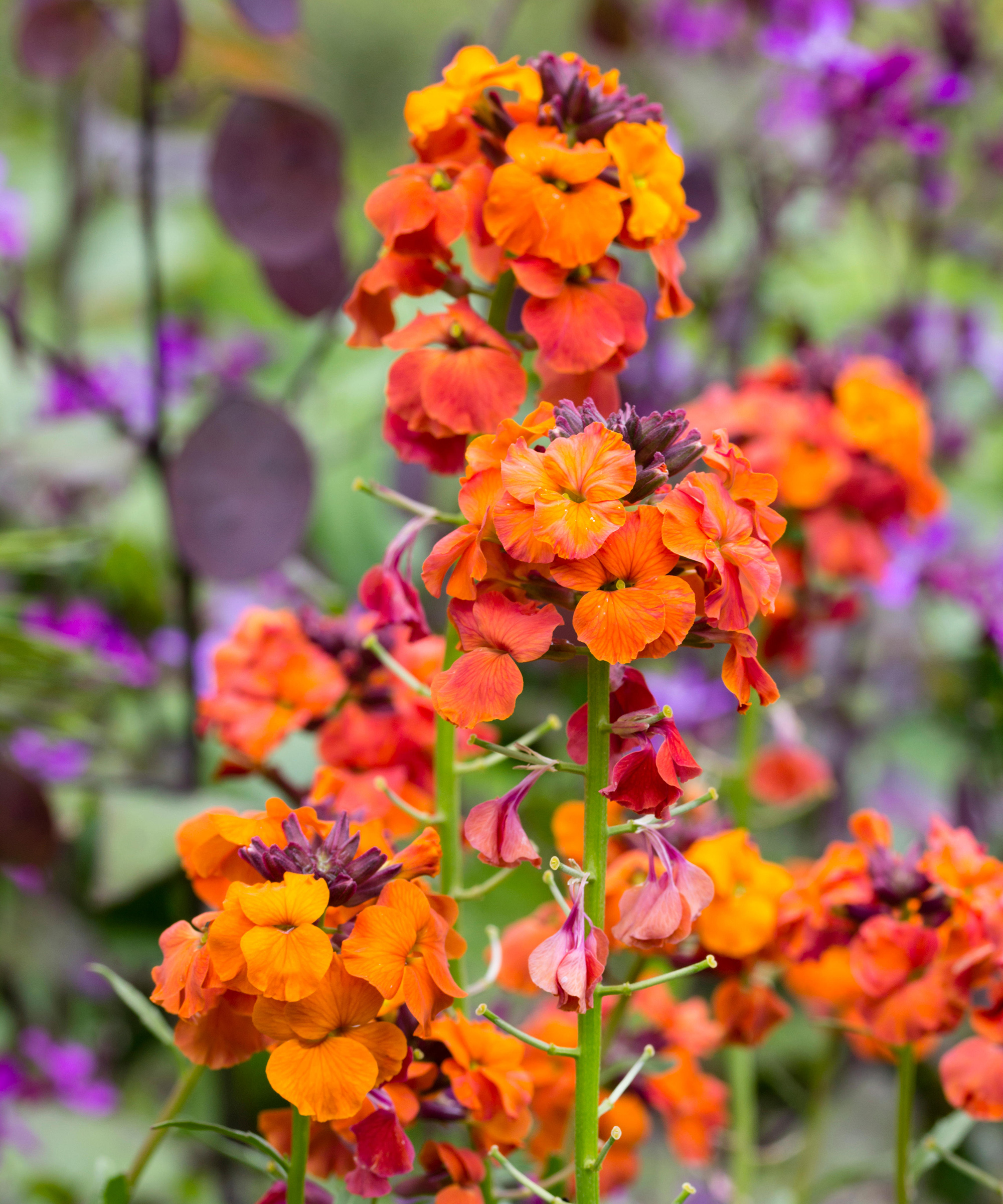
Erysimum 'Apricot Twist' is a birght orange perennial wallflower
The smokey purple-blue blooms of the gorgeous perennial wallflower Bowles’ Mauve, at 30in (76cm) high, really pack a punch in the garden border. And they are often abuzz with eager pollinators in summer.
A vigorous, shrubby plant, erysimum tolerates poor, dry soil and flowers right through summer. Providing color and nectar from March till November. Attracting bumblebees, red mason bees and carder bees.
Keep deadheading flowers in order to keep the blooms (and the nectar snacks) flowing.
Other good varieties are ‘Winter Orchid’, which flowers from spring, with purple, pink and orange blooms and a heady scent. Or there’s bright orange ‘Apricot Twist’. Erysimums are best replaced every two to three years.
12. Origanum (Marjoram, Oregano)

Honey bees will forage on marjoram
Marjoram is pure catnip to pollinators, with its strongly-scented foliage and nectar-packed summer flowers. It's a woody perennial with aromatic dark green leaves and like most Mediterranean herbs it prefers full sun and well-drained soil.
For a pretty golden-leaved plant, try ‘Aureum’, a ground-hugging variety with tiny pale-pink flowers in midsummer. It's perfect for small rock garden ideas or to use to plant a herb pot.
‘Kent Beauty’ has trailing stems with two-tone pink flowers, reaching to height of 6-8in (15-20cm). The variety ‘Herrenhausen’ is a decorative plant which also works well as a ground cover plant. It bears a froth of pinkish-purple flowers for eager pollinators in midsummer and grows larger at 2ft (60cm). Keep picking the stems for kitchen use and marjoram will keep producing fresh growth.
13. Honeysuckle

Lonicera ‘Belgica’ flowers from May all through summer
This beautiful climbing cottage garden plant with its long, tubular flowers is a magnet for long-tongued bees like bumblebees and carder bees, and its powerful evening fragrance attracts moths too. Honeysuckle looks romantic spilling from a cottage porch or garden arch.
The variety ‘Belgica’ flowers from May all through summer, with spidery pink, apricot and yellow blooms with a clove-like perfume. In winter, its jewel-like red berries are welcome food for birds.
There is also a semi-evergreen version, halliana, with white flowers that age to yellow. If you’re short of space, choose ‘Rhubarb and Custard’, a new compact honeysuckle growing to 3ft (90cm) tall. Plant honeysuckles in full sun or light shade, in moisture-retentive soil.
14. Allium

Allium hollandicum 'Purple Sensation' will grow up to 3ft tall
Alliums are undisputed nectar cafés for pollinators. The tall globe-shaped types like ‘Purple Sensation’, which are 3ft (90cm) high, see hungry insects flocking to the blooms from May onwards. Alliums are striking structural plants for the border, and easy to grow.
They look fabulous as part of your garden gravel ideas and work well in containers. Look out for ‘Purple Rain’ whose blooms have a metallic sheen. Whereas Nectaroscordum siculum, the Sicilian garlic, is different, with elegantly drooping cream flowers.
Chives are also in the allium family, and look superb planted as a hedge with their pretty mauve flowers which attract bumblebees.
Follow our advice on how to plant allium bulbs and put them in well-drained soil, in sun or part-shade, then cut back messy leaves once the plants flower.
15. Sedum spectabile (Hylotelephium)

Butterflies flock to Sedum spectabile Autumn Joy
In late summer, butterflies and bees flock to the late summer nectar banquet that is sedum. Its blooms consist of hundreds of tiny pink or rusty-red flowers, and look great against the low sun rays.
Sedum looks good in all seasons: in spring the new fleshy foliage is an attractive grey-green, then after flowering for months, it forms dark winter skeletons. Good varieties are ‘Herbstfreude’ and there’s a sultry purple-leaved plant ‘Matrona’.
Cut the plants back in early spring. Sedum doesn’t need staking and is happy in container gardens too. It prefers full sun but tolerates shade, providing it’s not wet. Divide plants every few years to stop it getting too big.
16. Abelia (Bee bush)

Keep abelia plants in a sheltered spot
Butterflies and bees just love abelia, making it one of the top plants for pollinators. This trouble-free semi-evergreen shrub is a bonus, as it blooms in late summer, with white-pink scented flowers providing valuable food for late-flying pollinators.
‘Edward Goucher’ is an arching shrub with lilac-pink flowers from midsummer, reaching a height of 5ft (1.5m). For a smaller space, choose a compact form like ‘Raspberry Profusion’ with pink flowers from spring which grows to 4ft (1.2m).
‘Confetti’ has white-edged leaves with flowers from midsummer and only grows to 3ft (1m). If you're in need of one of the best plants for small gardens, choose award-winning ‘Magic Daydream’, which is short enough for a pot. Prune abelia after flowering if it outgrows its space. Give it a sheltered spot, in sun or part-shade and protect it from cold weather.
17. Buddleja (Butterfly Bush)

Red admiral butterflies will flock to the Buddleja bush in late summer
If you want to know how to grow a butterfly garden, our advice is to add this pollinator-friendly plant to your list as buddlejas are irresistible to butterflies. It’s not unusual to see several on one bloom at the same time in late summer. Buddlejas are deciduous or semi-evergreen shrubs which come in a range of colors from deep purple, through to pink and white.
For an inky purple, choose ‘Black Knight’ reaching 9ft (3m) tall or for rich purply-red, try ‘Royal Red’ 9ft (3m). ’White Profusion’, also 9ft (3m), has pristine white flowers with a yellow eye.
For compact spaces, breeders have developed smaller buddlejas like ‘Sugarplum’, which grows to 6ft 6in (2.25m), and container-friendly cultivars like the ‘Candy’ series. Buddleja prefers full sun. Cut the plants right back to the ground in March.
18. Verbena bonariensis

Verbena bonariensis provides the perfect drive-thru snack
This 5ft (1.5m) tall, graceful plant is well-known for attracting butterflies. Its flat flowers are perfect as a drive-thru snack for hungry pollinators. Like achillea and sedum, the flowerheads are composed of dozens of tiny individual nectar-laden flowers which bloom from summer to fall.
Coming from the steppes of Argentina, verbena bonariensis has a prairie-style vibe, and looks stunning in drifts in low maintenance flowerbeds or gravel gardens, planted with tall grasses like stipa gigantea or other tall perennials like echinacea, which is also a good pollinator plant. Plant in a sunny spot and in groups, rather than singly. They’ll seed around a bit, but not too much.
19. Centranthus ruber (Red Valerian)

Red valerian are some of the prettiest wildflowers there are
Extremely long-flowering and attractive to butterflies, valerian are some of the prettiest wildflower meadow plants there are. You often spot them growing out of old stone garden walls or on cliffs in seaside areas, with their clusters of pinkish-mauve flowers above the fleshy, light green leaves.
There’s an elegant-looking white variety, ‘Albus’, as well as ‘Coccinea’, a deep pinkish-red. Valerian is ideal for a naturalistic or seaside garden and provides months of color as well as a spread of nectar for pollinators from May until October. Mid-height, it grows to 24-36in (60-90cm), self-seeding if it’s happy.
Cut it back in autumn and make sure it’s not waterlogged in winter. It’s best in a sunny, exposed position and prefers to grow in poor soil.
Want to introduce more wildflowers to your plot? Our guide on how to plant a wildflower meadow has lots of tips for creating one from scratch.
20. Asters

The nectar on asters is easily accessed by bees and butterflies
Michaelmas daisies are welcome for their clouds of tiny daisies in flower from August to October, both for their striking pinks, blues or purples in the border and their vital supplies of nectar so late in the year.
They are one one of the best plants for pollinators because the nectar is so easily accessible, right there in the central disc with the petals surrounding it. Grow the single-flowered types for maximum pollinator power.
Aster x frikartii ‘Monch’, which grows to a height of 1.5ft (45cm) and has light blue petals around a yellow disc. For a striking deep purple, try ‘Violetta,’ which is taller at 4ft (1.2m), blooming from September to October. Cut them back in winter.
If you're keen to learn how to grow asters, bear in mind that although they enjoy sun, they can also tolerate some shade.
21. Crab apple
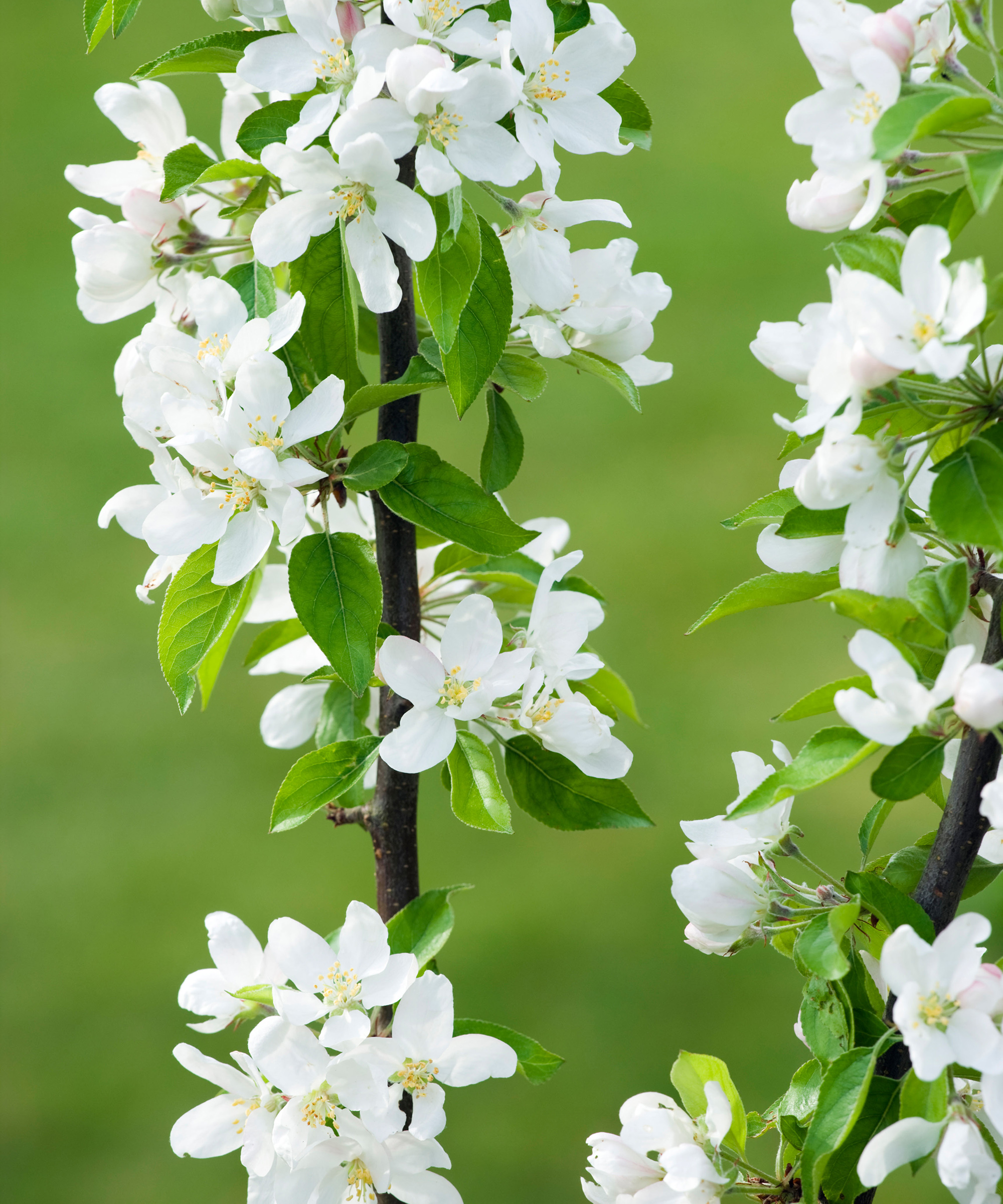
Queen bees will be thankful for the source of spring nectar from the Crab Apple, Malus 'John Downie'
The gorgeous sight of apple blossom in April is one of the joys of spring, but it’s also a fantastic source of nectar for queen bumblebees coming out of hibernation. Crab apples are particularly blossom-rich.
Choose from white, pale pink or purply-pink flowers, like ‘Profusion Improved’, with good autumn color and red fruit for birds, it grows to about 12ft (3.6m) tall. ‘John Downie’ has white flowers, orange-red fruit, and is a taller variety which reaches heights of 30ft (9m). ‘Evereste’ is conical in shape, with white flowers, orange-red fruits, and grows to 20ft (6m).
Malus (apple) varieties are generally better than prunus (cherry) for blossom so will make lovely trees for front yards to bring cheer to your neighbors. Malus prefer sun, but tolerate semi-shade. Check the size of your tree fits the space you have available before buying.
22. Rosemary

Rosemary 'Prostratus' is a perfect plant for pollinators and ideal for rock gardens
Rosemary is a hardy Mediterranean shrub with silvery evergreen foliage. With its long flowering season, it’s great for pollinators, and a big hit with bumblebees.
For a formal garden or hedge, try an upright form like ‘Miss Jessop’s Upright’, growing to 6ft (2m). There’s a sprawling rosemary which is perfect for rockeries - ‘Prostratus’, which is just 6in (15cm) tall.
You can even learn how to grow rosemary as a trailing plant in a window box if you choose the weeping form ‘Blue Cascade’. It’s studded with large violet-blue flowers which will tumble over the side of a container.
Prune rosemary stems regularly for use in cooking to keep the plant going. If you live in a cold area, give rosemary some protection in winter as it hates cold and wet.
23. Thyme

Creeping thyme is great pollen-rich ground cover plant
This pungently-scented Mediterranean herb is catnip for bumblebees, hoverflies and honey bees. It’s also an attractive ground-hugging plant, suited to gravel gardens or containers, which deserves to be more widely grown. Carpeting varieties like serpyllum, are perfect for this.
It's worth learning how to grow thyme so you can use it in your cooking, and there are a vast range of colors and flavours to choose from. Try caraway (herba-barona) and lemon-scented varieties, such as citriodora. Decorative types include variegated thymes like ‘Silver Posie’, with small, pretty flowers in white, pink or mauve.
‘Pink Chintz’ has greyish leaves and pink flowers, at 10in (25cm) tall. ‘Bertram Anderson’, with gold-splashed leaves is a slightly taller, bushy plant, at 1ft (30cm) tall. Thyme must have full sun well-drained, gritty soil.
24. Salix (Pussy willow)

Pussy willow are great for pollinators and for displaying in vases
Willows provide attractive pollen-packed catkins which are food for queen bumblebees emerging from their winter sleep. They are fully hardy trees or shrubs and prefer a sunny spot. One of the best known garden willows is ‘Kilmarnock’, a small 6ft (1.8m) weeping tree with greyish catkins in early spring that later turn to yellow.
Another good choice for a smaller garden or large container is ‘Mount Aso’, which produces fluffy pink catkins in late winter, and also grows to just 5ft (1.5m) tall. Salix exigua, the coyote willow, has pale yellow catkins in spring, when it also produces attractive silvery, silky leaves that shimmer in the breeze. It's a taller variety at 20ft (6m). Grow willows in any soil except very dry spots.
25. Digitalis (Foxglove)

Consider foxgloves an all-you-can-eat buffet for bees
To a bee, a foxglove is like a skyscraper with an all-you-can-eat buffet on every floor. Grow digitalis and you’ll be rewarded with the hum of happy pollinators as the soundtrack to your summer.
Digitalis are adored by long-tongued bees like bumblebees and carder bees. The classic foxglove for including in cottage garden ideas is digitalis purpurea, with purple blooms spotted inside the tubular-shaped flowers.
‘Sutton’s Apricot’ is an award-winning apricot pink variety. Or grow the white form, albiflora, for a sophisticated look.
Foxgloves flower in early summer, but will keep on going if you cut back the spikes when they finish blooming, so new ones will grow. They’re happy in dappled shade, but flower well in sun too.
What is the most effective pollinator?
Bees are incredible pollinators, especially honey bees, spreading pollen from plant to plant as they forage, helping to produce our food.
But a range of other insects and animals help too – butterflies, beetles, ants, hoverflies, bats and even wasps play an important role in pollination. That’s why it’s important to include a varied range of plants in your flowerbed ideas over a long season to attract different pollinators.

A Monarch butterfly on purple asters
Are butterflies important pollinators?
Butterflies are important pollinators and beautiful to see in our gardens. But there are 57 species of butterflies compared to more than 2,500 of moth species. So it’s important to include some night-scented plants like jasmine and honeysuckle for attracting moths too.

How do I attract pollinators to my garden?
Now you've read up on the best plants for pollinators, what else can you do to attract important insects and wildlife to your plot?
First, stop using garden pesticides. Next, let the grass grow – grass can be a habitat and nesting site for bees and other insects. Leave a part of your garden unclipped, to encourage wildlife.
And don’t be too tidy a gardener – although you might think of weeds as nettles, they are havens for butterflies. Old flower stems provide winter shelter for insects, so wait until spring to cut them back too.
Finally, adding one or two bug hotel ideas to your plot is a great way of encouraging even more pollinators to set up camp in your backyard.

Geraldine is a gardener and garden writer, who has worked for over 12 years in historic public gardens and private gardens around London. She has written articles for Easy Gardens, Which? Gardening and Women’s Weekly Gardening Special magazines and for gardeningetc.com. She also edited the book ‘Britain’s Favourite Plants’ for the RHS.
